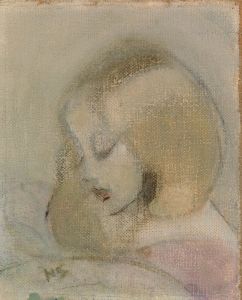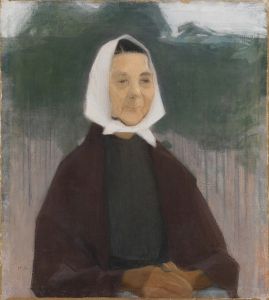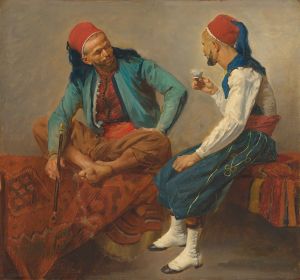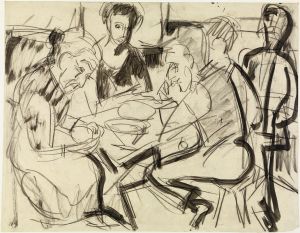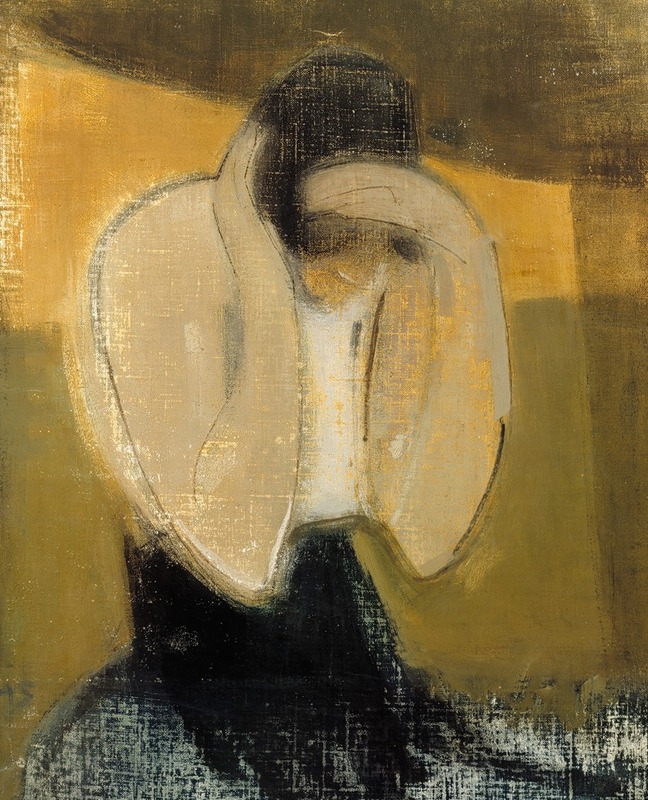
The Gipsy Woman
A hand-painted replica of Helene Schjerfbeck’s masterpiece The Gipsy Woman, meticulously crafted by professional artists to capture the true essence of the original. Each piece is created with museum-quality canvas and rare mineral pigments, carefully painted by experienced artists with delicate brushstrokes and rich, layered colors to perfectly recreate the texture of the original artwork. Unlike machine-printed reproductions, this hand-painted version brings the painting to life, infused with the artist’s emotions and skill in every stroke. Whether for personal collection or home decoration, it instantly elevates the artistic atmosphere of any space.
"The Gipsy Woman" is a painting by the Finnish artist Helene Schjerfbeck, created in 1919. Helene Schjerfbeck (1862–1946) is one of Finland's most celebrated artists, known for her distinctive style that evolved significantly over her long career. Her work is characterized by a move from naturalism to a more modernist approach, often focusing on portraiture and self-portraits.
"The Gipsy Woman" is a notable example of Schjerfbeck's mature style, where she employed a minimalist approach to form and color, emphasizing the emotional and psychological depth of her subjects. This painting reflects her interest in capturing the essence of her subjects with a few, carefully chosen details. Schjerfbeck's technique often involved the use of thin layers of paint, allowing the texture of the canvas to play a role in the final image.
The subject of "The Gipsy Woman" is depicted with a focus on her facial features, which are rendered with a simplicity that belies the complexity of expression. Schjerfbeck's use of muted colors and soft lines contributes to the introspective and somewhat enigmatic quality of the painting. The background is typically sparse, drawing attention to the subject's face and expression.
Schjerfbeck's work, including "The Gipsy Woman," is often interpreted as a reflection of her own introspective nature and her interest in the inner lives of her subjects. Her portraits are not just representations of physical appearance but are imbued with a sense of the subject's inner world. This approach has led to comparisons with other modernist painters who sought to move beyond mere representation to explore deeper psychological and emotional truths.
Throughout her career, Schjerfbeck was influenced by various art movements, including Impressionism and Symbolism, but she developed a unique style that set her apart from her contemporaries. Her work was not widely recognized outside of Finland during her lifetime, but she has since gained international acclaim, with exhibitions in major museums and galleries around the world.
"The Gipsy Woman" is part of Schjerfbeck's broader body of work that includes numerous portraits, self-portraits, and still lifes. Her ability to convey emotion and character with economy of means has made her a significant figure in the history of modern art. Today, her paintings are held in high regard for their innovative approach and emotional depth.
Helene Schjerfbeck's legacy continues to influence artists and captivate audiences, and "The Gipsy Woman" remains an important example of her contribution to the art world. Her work is celebrated for its ability to transcend time and place, offering insights into the human condition that are as relevant today as they were in her own time.






